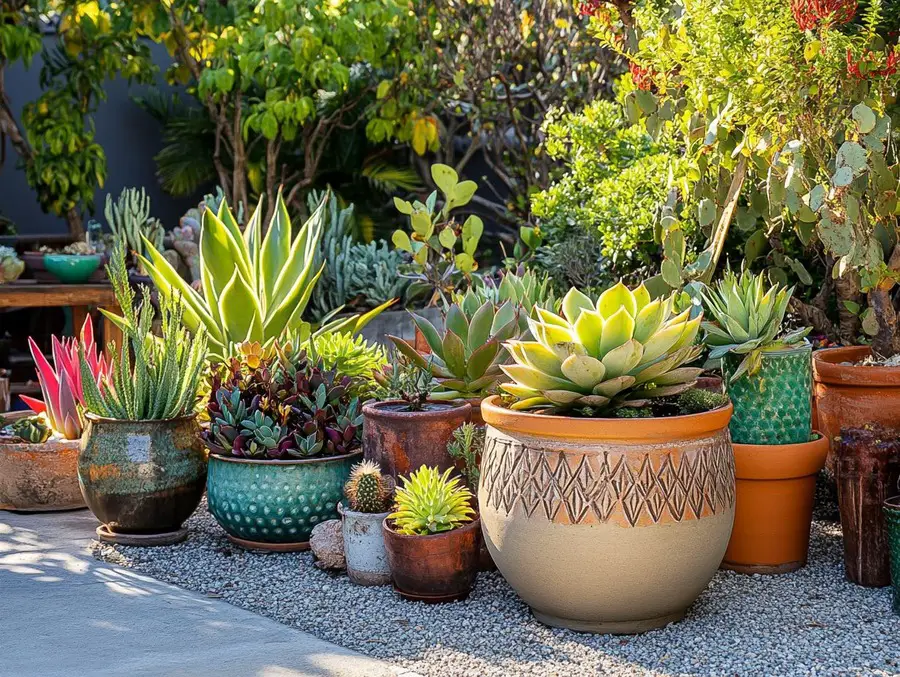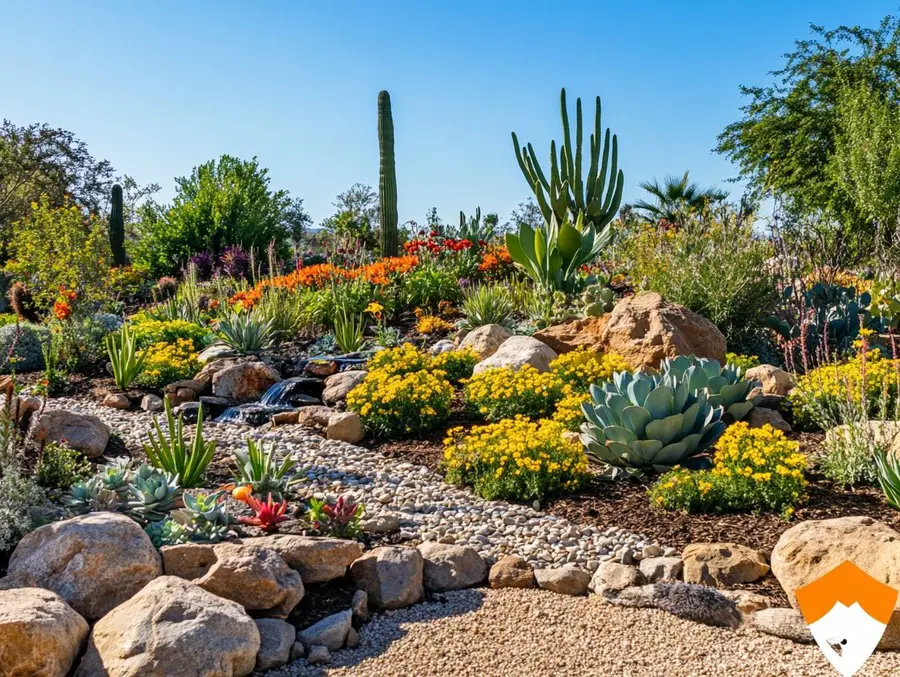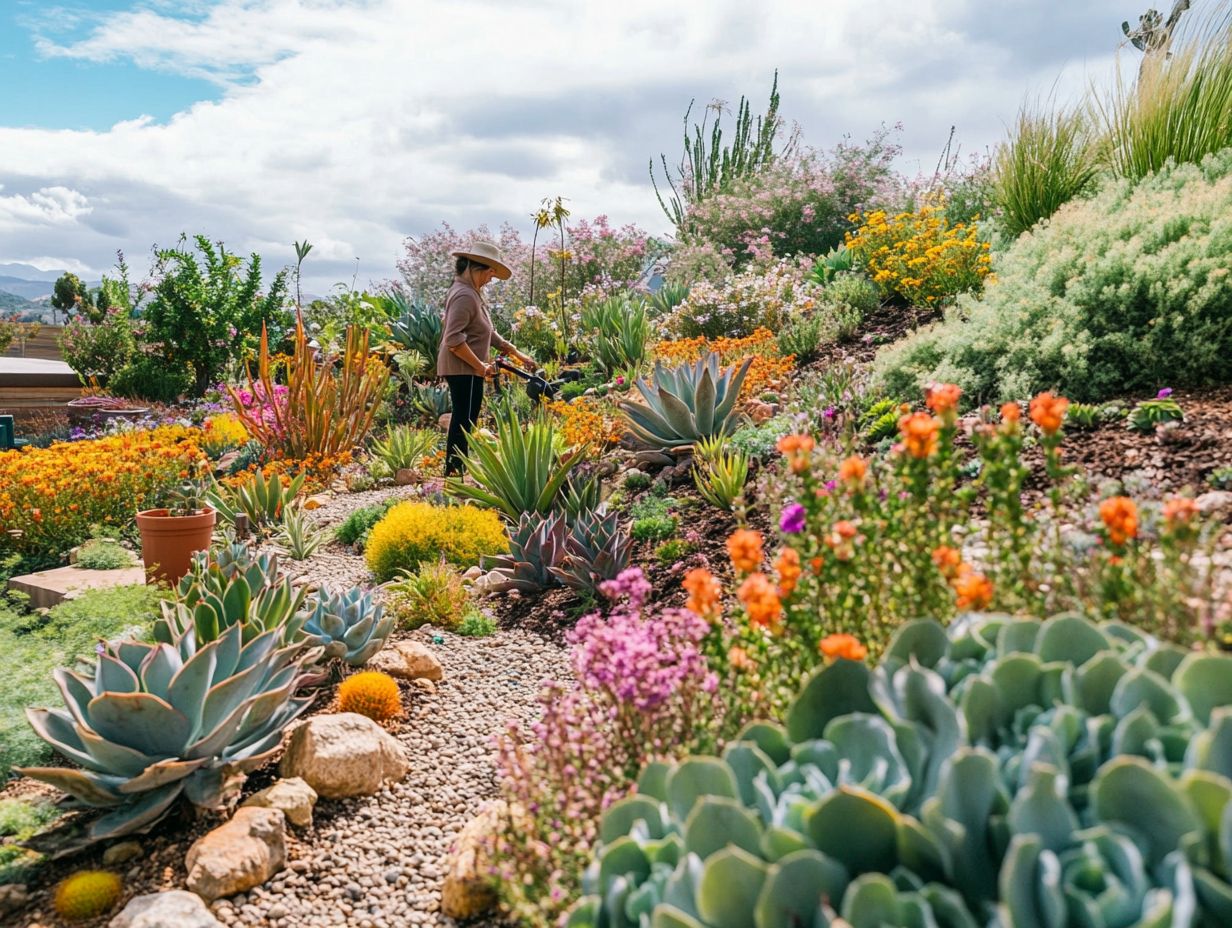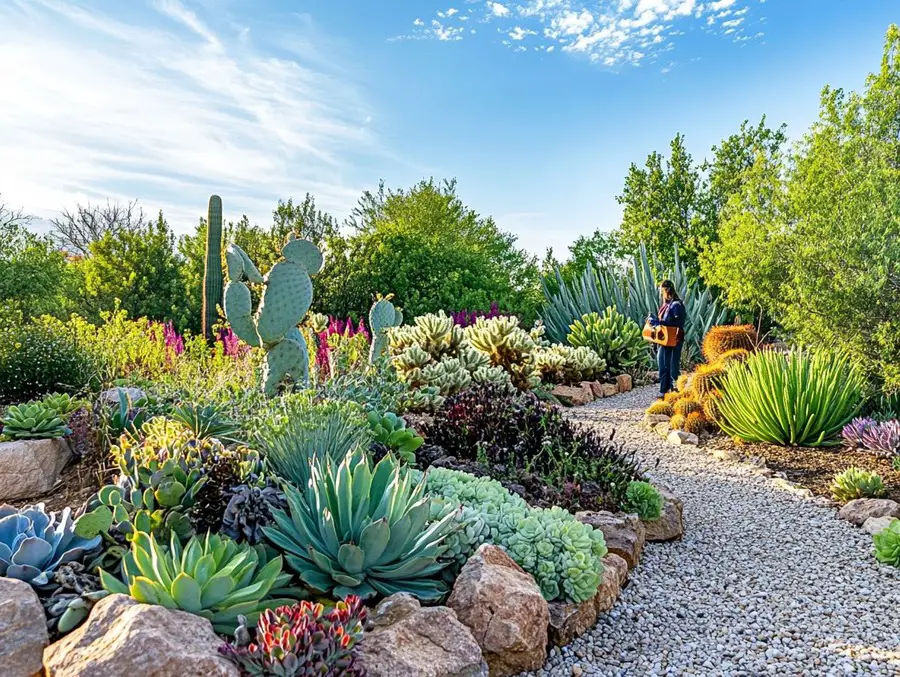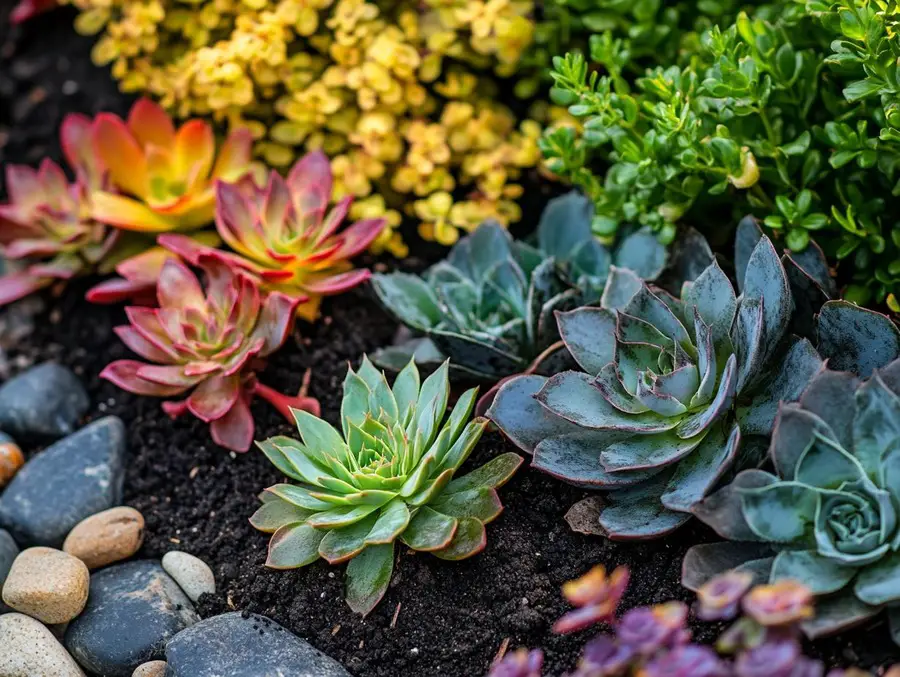We use affiliate links. If you purchase something using one of these links, we may receive compensation or commission.
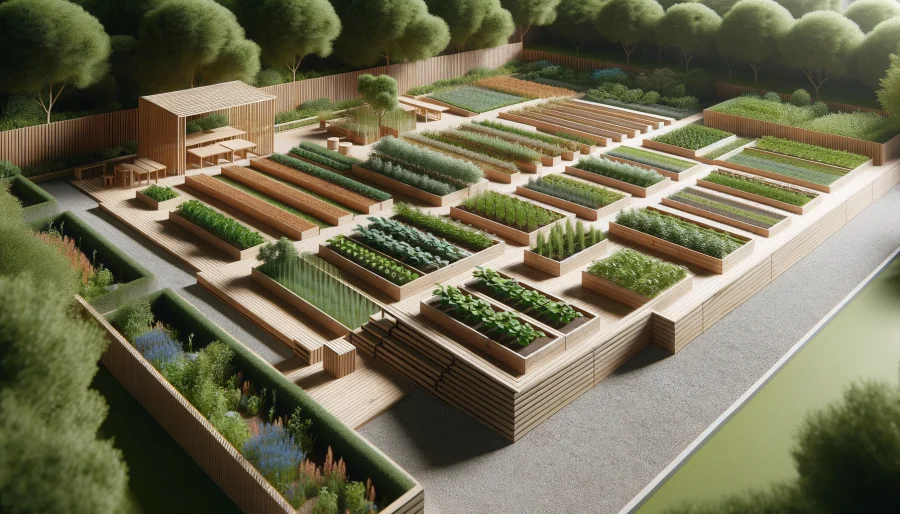
Looking for the best community garden design ideas? You’ve come to the right place!
We’ll walk you through practical tips and creative concepts to help you plan a thriving community garden that brings your neighborhood together.
Community Garden Design Ideas
Key Takeaways
- Community garden design ideas include planning layouts, choosing sustainable practices, and engaging the community.
- Key aspects involve selecting a suitable location, incorporating accessible paths, and creating social spaces to foster community interaction.
Community Garden Design Ideas
Hey there! Ready to dig into some community garden design ideas?
Whether you’re new to gardening or have a green thumb, we’ve got you covered.
Let’s explore how to create a space that brings neighbors together, offers fresh veggies, and adds some greenery to your area.
Importance of Community Gardens
Community gardens are more than just places to grow plants.
They transform vacant lots into bustling green spaces where people can connect and work towards a common goal.
These gardens offer fresh produce and a bit of nature, making our neighborhoods feel more vibrant and welcoming.
Benefits of Community Gardens
Community gardens are a win-win for everyone.
They help build strong community ties, offer fresh and healthy food, and turn unused spaces into beautiful, green areas.
Here’s why you should consider starting one:
- Building Community Spirit: Working together on a garden helps neighbors bond and create lasting friendships.
- Fresh Produce for All: Enjoy the fruits (and veggies) of your labor with fresh, healthy options right in your backyard.
- Creating Green Spaces: Beautify your neighborhood with lush, green spaces that everyone can enjoy.
Read about Community Gardens Benefits: How To Start a Community Garden
1. Getting Started

Ready to start your community garden? Let’s get the ball rolling!
The first steps are crucial and will set the tone for your garden’s success.
We’ll cover gathering community support and finding the perfect location for your garden.
Gather Community Support
Getting your neighbors on board is the first big step.
A community garden thrives on collaboration and shared effort.
Here’s how to kick things off:
- Organize a Meeting: Host a get-together to share your vision and gather ideas.
- Spread the Word: Use flyers, social media, and word of mouth to reach more people.
- Invite Input: Encourage everyone to share their thoughts and get involved.
Find a Suitable Location
Choosing the right spot for your garden is key. Look for a place that gets plenty of sunlight and has easy access to water.
Here are some things to consider:
- Sunlight: Make sure the spot gets at least 6-8 hours of sunlight daily.
- Water Access: Check if there’s a nearby water source for easy watering.
- Soil Quality: Test the soil to ensure it’s fertile and free from contaminants.
- Accessibility: Ensure the location is easy for everyone to reach, including those with limited mobility.
2. Planning and Design
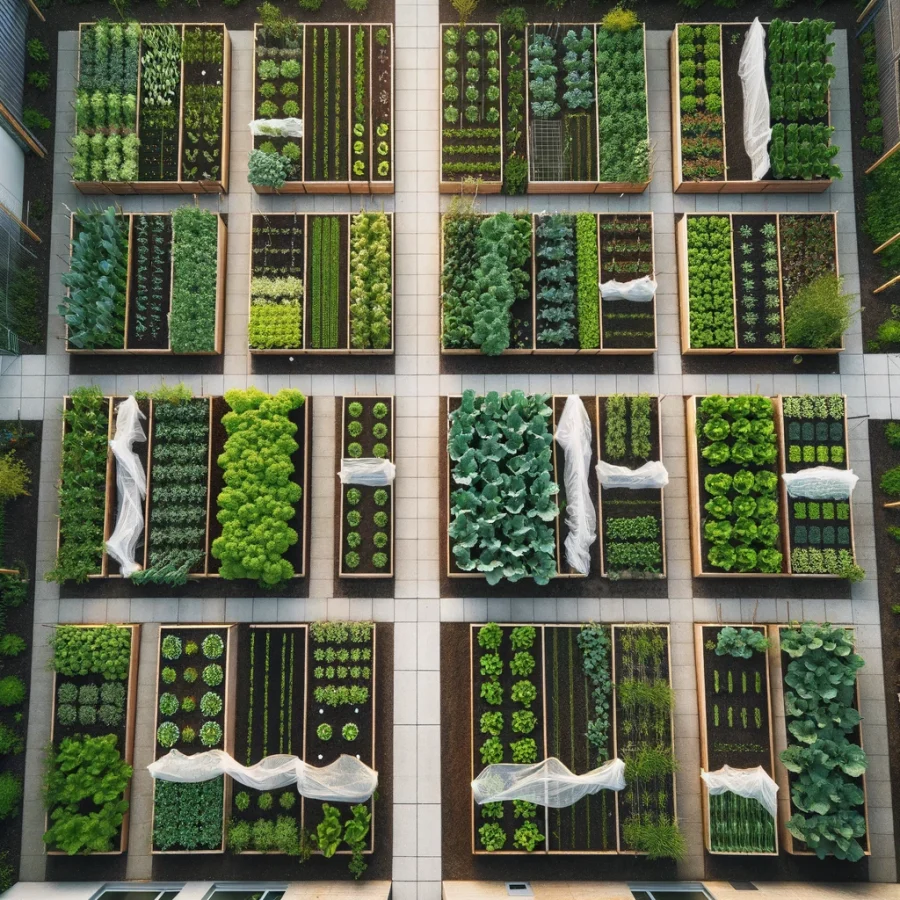 Time to roll up our sleeves and get into the nitty-gritty of planning your community garden.
Time to roll up our sleeves and get into the nitty-gritty of planning your community garden.
This section will help you with layout ideas, creating a solid project plan, and incorporating essential design principles.
Let’s make your garden both beautiful and functional!
Garden Plot Layout Drawing
Creating an effective and attractive garden layout can make a world of difference. Here’s how to get started:
- Think Outside the Box: Mix up the shapes of your garden beds. They don’t all have to be rectangles. Circular or L-shaped plots can add visual interest.
- Paths and Gathering Spaces: Design paths that are wide enough for easy access and include areas where people can gather and relax.
- Layering Plants: Use different plant heights to create depth and variety. Tall plants at the back, medium ones in the middle, and short ones at the front.
Community Garden Project Plan
A detailed project plan is your roadmap to success. Here’s what to include:
- Timelines: Set clear milestones for each phase, from initial setup to the first harvest.
- Budget: Estimate costs for materials, plants, and tools. Look for ways to save, like seeking donations or grants.
- Resource Allocation: Assign tasks and responsibilities to community members to ensure everyone contributes and stays engaged.
Incorporating Design Guidelines
Design principles are crucial for a garden that’s easy to use and accessible to all. Focus on these key elements:
- Functionality: Plan for efficient use of space. Raised beds can make gardening easier, especially for older adults or those with mobility issues.
- Accessibility: Ensure paths are wide enough for wheelchairs and strollers. Include benches and shaded areas for resting.
- Sustainability: Use eco-friendly materials and practices like composting and rainwater harvesting.
3. Essential Infrastructure

Hey there! Let’s make sure your community garden has all the right stuff to keep it thriving.
We’ll dive into setting up a sustainable water supply, composting for healthy soil, and organizing storage for tools and supplies.
Water Supply and Irrigation Systems
Making sure your garden has a steady water supply is key. Here are some friendly, eco-friendly tips:
- Rainwater Harvesting: Set up rain barrels to collect and store rainwater. It’s a great way to save on water bills and keep your plants happy.
- Efficient Irrigation: Use drip irrigation systems. They get water right to the roots where it’s needed most, cutting down on waste and keeping your garden green.
Composting and Waste Management
Turning kitchen scraps and garden waste into compost is like giving your plants a vitamin boost. Here’s how to get started:
- Compost Bins: Place compost bins in a spot that’s easy for everyone to reach. Teach folks what can go in the compost (like fruit peels and coffee grounds) and what can’t (like meat and dairy).
- Turning and Monitoring: Give the compost a good turn now and then to help it break down faster. Keep an eye on it to make sure it stays balanced and doesn’t get too smelly.
Storage and Tool Sheds
Having a place for everything makes gardening so much easier. Here’s why a shared shed is a great idea:
- Shared Storage: A community tool shed means everyone has access to the basics like shovels, rakes, and watering cans. No more hauling tools from home!
- Organized Space: Keep the shed tidy with labeled spots for each tool. This way, everything’s easy to find and put back, keeping things running smoothly.
4. Planting and Maintenance

Now that your garden’s infrastructure is set, it’s time to focus on planting and keeping everything in tip-top shape.
We’ll cover picking the right plants, ongoing garden care, and getting the community involved in maintenance.
Selecting Plants
Choosing the right plants can make or break your garden. Here’s how to select winners:
- Local Climate: Pick plants that thrive in your local weather. Check out what grows well in your area and start with those.
- Community Needs: Think about what the community wants. Do folks prefer veggies, herbs, or flowers? Maybe a mix of all three?
- Native and Pollinator-Friendly Plants: Go for native plants and those that attract pollinators like bees and butterflies. They’re usually easier to grow and great for the environment.
Garden Care
Regular maintenance is the secret to a healthy garden. Here are some tips to keep things blooming:
- Weeding: Keep weeds at bay to give your plants room to grow. A little weeding each week goes a long way.
- Watering: Make sure your plants get enough water, especially during dry spells. Early morning or late evening is the best time to water.
- Pest Control: Watch out for pests. Use natural methods like introducing beneficial insects or homemade sprays to keep them under control.
Organizing Workdays and Volunteer Efforts
Keeping a community garden in great shape takes teamwork. Here’s how to get everyone involved:
- Schedule Regular Workdays: Plan weekly or monthly workdays where everyone can pitch in. It’s a great way to share the load and build camaraderie.
- Divide Tasks: Assign specific tasks to volunteers based on their skills and interests. Some folks might prefer planting, while others are great at building or maintenance.
- Social Events: Combine workdays with social events like potlucks or picnics. This makes garden upkeep fun and encourages more participation.
5. Enhancing the Garden Experience

Let’s make your community garden a place where everyone wants to be.
We’ll talk about creating social spaces, launching educational programs, and adding artistic touches to make the garden more inviting and fun.
Creating Social Spaces
A garden is more than just a place to grow plants; it’s a place to gather and connect. Here’s how to create inviting social spaces:
- Picnic Spots: Set up picnic tables and benches where folks can sit, eat, and chat. These spots become natural gathering places.
- Seating Areas: Add a few benches or chairs in shady spots. People will appreciate a place to relax and enjoy the garden.
- Shaded Nooks: Create shaded areas with pergolas or umbrellas. These nooks provide relief from the sun and a cozy place to unwind.
Educational Initiatives
Involving local schools and kids in the garden can be incredibly rewarding. Here are some ideas:
- School Partnerships: Partner with local schools to use the garden as an outdoor classroom. Kids can learn about plants, ecology, and healthy eating.
- Children’s Gardening Activities: Set up special garden beds for kids. Teach them how to plant, water, and harvest. It’s a great way to spark a love for gardening early on.
Art and Aesthetics
Adding artistic elements can make your garden a vibrant and attractive place. Here’s how to add some flair:
- Artwork and Murals: Invite local artists to create murals or sculptures. These pieces add character and make the garden unique.
- Ornamental Plants: Mix in some flowers and decorative plants. They add color and beauty, making the garden more appealing.
- Garden Art: Consider garden gnomes, wind chimes, or other fun decorations. These small touches can make a big difference in how inviting the garden feels.
6. Ensuring Safety and Security

Keeping your community garden safe and accessible is super important.
We’ll go over adding fences and security measures, plus making sure the garden is welcoming and usable for everyone.
Fencing and Security Measures
Making sure your garden is secure helps protect it and the people who use it. Here’s how to do it:
- Installing Fences: A good fence keeps the garden safe from animals and unwanted visitors. It also helps define the garden space.
- Security Lights: Adding motion-sensor lights can deter nighttime trespassers. They light up the garden when needed, making it safer to visit in the evening.
- Establishing Clear Rules: Set some ground rules for garden use. Post them where everyone can see. This helps keep things orderly and respectful.
Accessibility Considerations
Your garden should be a place where everyone feels welcome and can participate. Here are some ways to make it accessible:
- Raised Beds: These make gardening easier for folks who can’t bend down. They’re also great for people using wheelchairs.
- Wide Paths: Make sure the paths are wide enough for wheelchairs and strollers. Smooth, even surfaces help prevent trips and falls.
- Accessible Tools: Have tools available that are designed for people with different abilities. Things like long-handled tools or easy-grip handles can make a big difference.
7. Creative Community Garden Design Ideas

Ready to add some flair to your community garden? Here are a few creative design ideas to make your garden not just functional, but also a beautiful and inspiring space.
Themed Garden Areas
Creating themed sections can make your garden more interesting and enjoyable for everyone.
- Herb Garden: Dedicate a section to a variety of herbs. This can include common ones like basil and rosemary, as well as more exotic varieties.
- Pollinator Garden: Plant flowers that attract bees, butterflies, and other pollinators. Not only does this look beautiful, but it also helps with the pollination of your vegetables and fruits.
- Children’s Garden: Create a special area for kids with easy-to-grow plants, fun garden decorations, and educational elements like plant labels and interactive displays.
Vertical Gardening
Maximize space and add visual interest with vertical gardening techniques.
- Trellises and Arbors: Grow climbing plants like beans, peas, and cucumbers on trellises or arbors. This saves ground space and creates a lush, green canopy.
- Wall Gardens: Use wall-mounted planters or hanging baskets to grow flowers, herbs, or even small vegetables.
- Pallet Gardens: Repurpose old pallets by turning them into vertical planters. These can be great for growing herbs, strawberries, or succulents.
Edible Landscaping
Combine beauty and functionality by integrating edible plants into your garden’s design.
- Mixed Borders: Plant edible flowers like nasturtiums and pansies alongside vegetables and herbs in your garden beds.
- Fruit Trees: If space allows, include dwarf fruit trees such as apple, pear, or citrus varieties. These not only provide shade but also yield delicious fruits.
- Berry Bushes: Add berry bushes like blueberries, raspberries, or blackberries along the edges of your garden for a tasty and attractive border.
Community Art Projects
Involve the community in creating art for the garden, adding personal touches that everyone can enjoy.
- Mosaic Pathways: Create pathways using mosaic tiles or stones. Invite community members to design and lay the tiles for a unique and collaborative art piece.
- Painted Fences and Murals: Use garden fences or walls as canvases for murals. Local artists or children can paint scenes that reflect the community’s spirit and history.
- Garden Sculptures: Place sculptures or art installations throughout the garden. These can be made from recycled materials, making them both eco-friendly and artistic.
Sensory Gardens
Design areas that stimulate the senses for a therapeutic and relaxing experience.
- Fragrant Plants: Include plants with strong scents like lavender, mint, and jasmine.
- Textured Plants: Grow plants with interesting textures, such as lamb’s ear, ornamental grasses, and succulents.
- Sound Elements: Add features like wind chimes or water fountains to create soothing sounds.
These creative ideas can transform your community garden into a place of beauty and inspiration. Ready to implement these ideas? Let your creativity bloom!
FAQ Section
Got questions about community gardens? You’re not alone! Here are some common questions and answers to help you get started and keep your garden thriving.
Q: How do you structure a community garden?
A: Structuring a community garden involves several steps.
Start by gathering community support and selecting a suitable location.
Design your garden layout with accessible paths and varied plot sizes.
Set clear rules and guidelines to ensure everyone knows their responsibilities and the garden runs smoothly.
Q: What is a good size for a community garden?
A: The size of a community garden depends on the available space and the number of participants.
A garden can be as small as a single vacant lot or spread over several acres.
It’s best to start small and expand as needed. Consider having individual plots that are manageable, like 10×10 feet, to allow more people to participate.
Q: How do you prepare a community garden plot?
A: Preparing a community garden plot involves several key steps.
Clear the area of weeds and debris, test the soil, and amend it with compost or other organic matter.
Lay out the garden beds and paths, ensuring good drainage.
Mulch the paths to reduce weeds and maintain moisture.
Q: How can I make my community garden better?
A: To improve your community garden, focus on fostering a strong sense of community.
Organize regular events, workshops, and workdays. Incorporate educational programs and invite local schools to participate.
Ensure the garden is accessible and consider adding social spaces like picnic areas and shaded seating.
Q: What are the disadvantages of a community garden?
A: While community gardens have many benefits, they also come with challenges.
These include potential conflicts among gardeners, the need for ongoing maintenance, and securing long-term access to the land.
Vandalism and theft can also be concerns, so good security measures are important.
Q: What is a successful community garden?
A: A successful community garden is one that meets the needs of its members, is well-maintained, and fosters a strong sense of community.
Key factors include active participation, clear rules and guidelines, regular maintenance, and ongoing education and engagement activities.
Q: What is a community garden vs collective garden?
A: A community garden typically consists of individual plots managed by different members, whereas a collective garden is worked on by a group as a whole, sharing the tasks and the harvest.
Both models promote community engagement but differ in their approach to managing the garden.
Q: Are community gardens a good idea?
A: Yes, community gardens are a great idea! They offer numerous benefits such as providing fresh produce, fostering community spirit, and creating green spaces in urban areas.
They also offer educational opportunities and can improve the mental and physical health of participants.
Q: How to organize a garden?
A: Organizing a garden involves planning, coordination, and ongoing management.
Start by forming a group of interested individuals, choose a suitable site, and design the garden layout.
Set up a schedule for regular maintenance and involve the community in all stages to ensure everyone is engaged and invested.
Conclusion

Creating a community garden is a rewarding journey that brings people together, promotes healthy living, and beautifies our neighborhoods.
Let’s wrap up what we’ve covered and highlight the lasting benefits of your garden project.
Key Takeaways
Here are the main points to remember when planning and designing your community garden:
- Gather Community Support: Get your neighbors involved from the start.
- Find a Suitable Location: Look for a spot with good sunlight, water access, and quality soil.
- Plan and Design Thoughtfully: Create an inviting layout with accessible paths and varied plot sizes.
- Set Up Essential Infrastructure: Install a reliable water system, compost bins, and storage sheds.
- Choose the Right Plants: Select plants suited to your local climate and community needs.
- Maintain Your Garden: Keep up with regular weeding, watering, and pest control.
- Engage the Community: Organize workdays, educational programs, and social events.
- Ensure Safety and Accessibility: Install fencing, security measures, and make the garden accessible to everyone.
Long-Term Benefits
A community garden is more than just a place to grow plants. It offers lasting benefits that extend far beyond the garden itself:
- Fostering Community Spirit: Working together on a common project builds strong bonds and a sense of belonging.
- Providing Fresh Produce: Gardens offer access to fresh, healthy food, which can improve nutrition and well-being.
- Creating Green Spaces: Turning empty lots into beautiful gardens enhances the beauty of the neighborhood and provides a peaceful retreat for residents.
- Educational Opportunities: Gardens serve as outdoor classrooms, teaching kids and adults about nature, sustainability, and healthy living.
- Improving Mental and Physical Health: Gardening is a great way to stay active and reduce stress, contributing to overall health and happiness.
I hope this guide helps you create a vibrant and successful community garden that brings joy and benefits to everyone involved. Ready to get started? Your community garden adventure awaits!
Resources Section
Need more information or help with your community garden? Here are some useful links and contacts to get you started.
Further Reading
- American Community Gardening Association – Offers a wealth of resources on starting and maintaining community gardens.
- Green Thumb Organization – Provides guides and support for urban gardening projects.
- USDA Community Gardening Resources – Includes information on funding, soil health, and other gardening tips.
Helpful Tools
- Garden Planner Tool – Plan your garden layout with this easy-to-use tool.
- Rainwater Harvesting Calculator – Helps you design an efficient rainwater collection system.
- Composting Guide – Learn how to start and maintain a compost bin.
Community Gardening Organizations
- National Gardening Association – Provides resources and support for gardeners of all levels.
- Local Harvest – Connects you with local farmers, markets, and community gardens.
- Slow Food USA – Promotes sustainable food practices, including community gardens.
Feel free to reach out to these resources for more information and support. Happy gardening!
Related Content
Visit my Amazon Influencer Page for videos and gardening products Grow Your Own Garden

